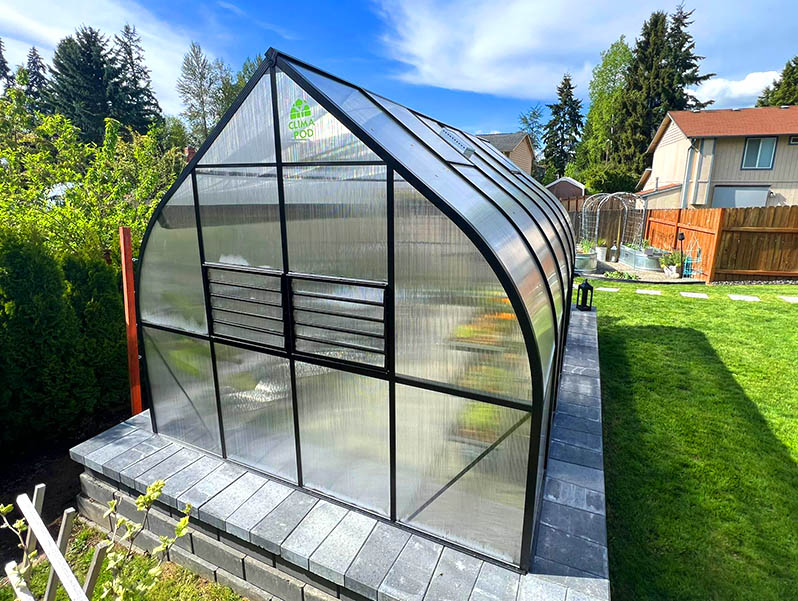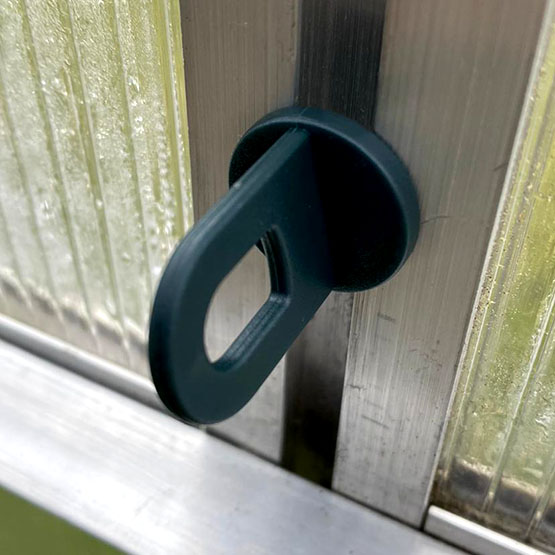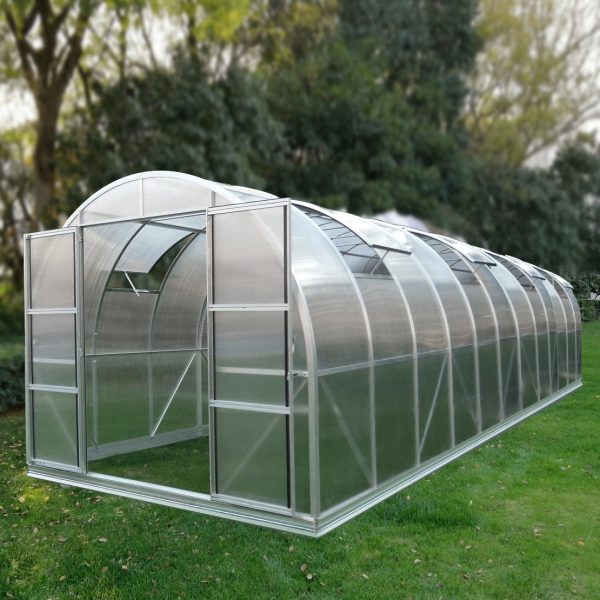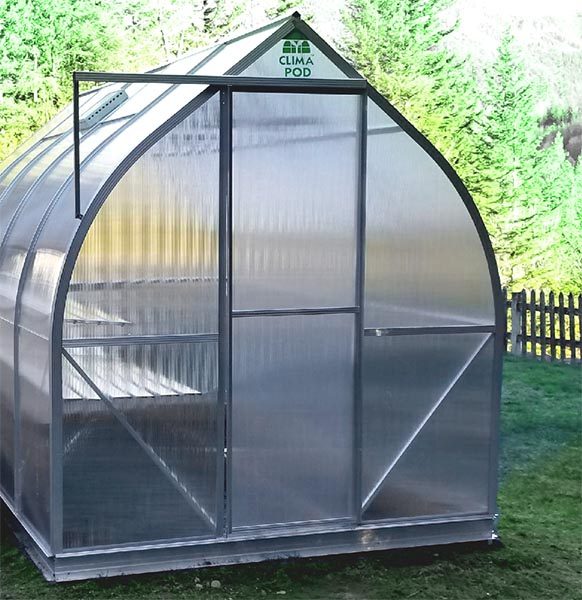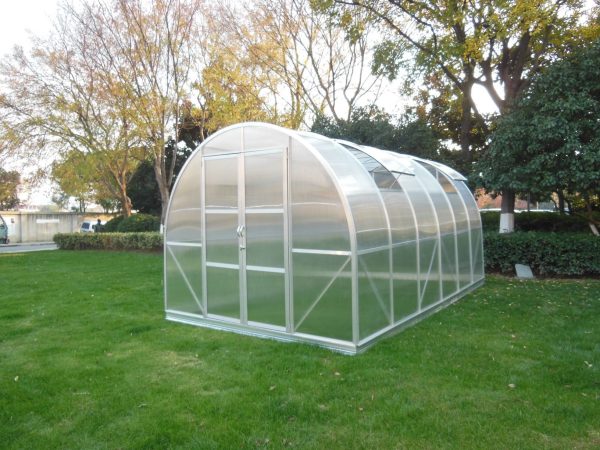When the ground has already warmed up well in a greenhouse in summer or spring, we usually transfer all the seedlings from the greenhouse to the open ground. But do not forget about greenhouses – with the right approach, growing in it will be relevant for most of the year.
Why you can continue to use your greenhouse in the summer
In the warm season, such structures allow you to create clearly controlled growing conditions, which are quite difficult to achieve in open ground. After all, although the heat is inherent in summer, sometimes it is quite cold. In addition, there are also dry days – and vice versa, periods of prolonged rains, even with hail. In addition, these precipitations often contain impurities harmful to plants. Because of such weather problems, plants experience stress: cucumbers wither, tomatoes turn black, dill and lettuce dry out, small watery berries ripen on strawberries, etc. It is to prevent this that greenhouses are used. Growing in a greenhouse in summer has some features. Let’s say right away that our advice is for non-professional gardeners who cannot afford expensive options for large greenhouses with automation.
Humidifying your greenhouse when it’s hot
During the hot summer months, you need to ventilate your greenhouse to maintain optimal temperature and humidity levels. To do this, you should equip it with at least two doors. In addition, it is better for you to make windows on the sides in the upper part every 2 m. In the design of our ClimaPod greenhouses, they already exist in the required quantities and at the right distance. Practitioners advise in our climatic conditions to keep the greenhouse door open at all times from June 10 to the end of August (if there is no heavy rain or wind – both during the day and at night).
“Water procedures” will also help to maintain humidity in the greenhouse. You should only water the plants in the greenhouse in the morning. In addition, you should install one 200-liter barrel of water in the greenhouse, painted in a dark (ideally black) color. During the day, they will accumulate heat, regulate temperature and humidity. At night, heat will be released into the air inside the greenhouse.
Natural ways to reduce the temperature in the greenhouse
And, of course, the question of how to protect plants from the scorching sun is relevant. To begin with, you need to pay attention to the place where the greenhouse is located. If the crop will ripen in it only in the warm season, you will have to carefully move the structure into the shade. And you can take care of such natural shading: surround the greenhouse with a screen of thorny decorative plants, that is, grow beans, corn, peas, grapes, blackberries or raspberries around the greenhouse on a grid or pegs.
In addition, to create shading in the greenhouse, you can use one of several “artificial” options. Since glass is not used very often as a coating material, and it is less demanding in operation, we will pay more attention to the film and polycarbonate. Bearing in mind that the same tips are also suitable for glass.
Expensive and cheap ways to reduce greenhouse heating
The first method is the most popular, considered simple and least expensive. This is when you cover the surface of the coating with a shading layer. Then the sun’s rays reflect from the shading material and the air inside the greenhouse will not heat up. The easiest option would be painting. However, this method has significant drawbacks if your greenhouse is covered with a film. When you need to get rid of the paint, you can damage the film in doing so.
As for water-based paint, it does not react with plastic, but it is difficult to remove. You can use chalk mortar with clay instead of paint. Apply with a sprayer or with a medium hard brush. The cover of the greenhouse will not need to be cleaned, as the rain will wash away the protective layer. Instead of chalk, you can use lime, but be very careful, because alkaline solutions can destroy the film.
The second method is aluminum blinds inside the greenhouse. This option is not very popular, because the cost of this light protection device is very high, not everyone can afford such expenses. In addition, the blinds do not adhere tightly to the cover of the greenhouse. Due to this, an air cushion appears inside and creates a dry atmosphere. Of course, this is bad for the growth of your plants. You can improve the situation if you use wooden slats instead of metal ones. But still more common and, in the opinion of practitioners, acceptable is the method, which we will consider further.
A kind of “umbrella” for a greenhouse
The third way is to use any screens that do not let the sun’s rays through. The covering fabric, which will perform protective functions, will not wrinkle and wear out. You can easily cut the material if needed. Such shading of the greenhouse will help you create a reliable protection against condensation. And mice and birds will not harm your plants. The advantage of using this method is that it is not necessary to roll up the shade protection before the onset of cold weather, because this material will not tear from snow and will not deteriorate from water.
You can shade your greenhouse with a special reflective mesh on the outside. This material is meant to reflect rays and you can remove it quickly if needed. Shading nets come in a variety of configurations. You can roll up some of them.
The density of the sun protection net should be selected based on the need of different crops for the amount of light. The level of light transmission in different types of nets can vary in the range of 15‒85%. Gardeners usually choose material with a ratio of 40‒50%. And one more point. Although the main purpose of the net is shading, it will also perform other useful functions: it will cover the greenhouse during hail, protect it from attacks by birds and insects. And experienced gardeners, in order to shade the greenhouse even more effectively, hang the net instead of simply laying it on the cover. Then the temperature inside the building will not increase, and the light will diffuse qualitatively.
As a variant of the protective screen – the use of spunbond. It is a light breathable material formed from thin polypropylene fibers, harmless to plants and humans. The price of spunbond is not too different from the cost of a polyethylene film, and its properties are similar to expensive materials: moisture and air permeability, preservation of the microclimate, high strength, resistance to the effects of chemical reagents, microorganisms and corrosion, use at any temperature with protection against wind and frost , acceleration of soil warming. And in the work, spunbond does not require much effort, which is also its advantage.
What to grow in a greenhouse in summer
It makes sense to plant different types of greenery in a summer greenhouse. You can harvest them all year round:
- lettuce,
- dill,
- parsley,
- green onions,
- etc.
In addition to greens, you can grow various types of vegetables in the greenhouse in summer:
- cucumbers,
- tomatoes,
- radishes
- and mushrooms.
Strawberries with raspberries, watermelons and melons also grow well in greenhouse conditions.

